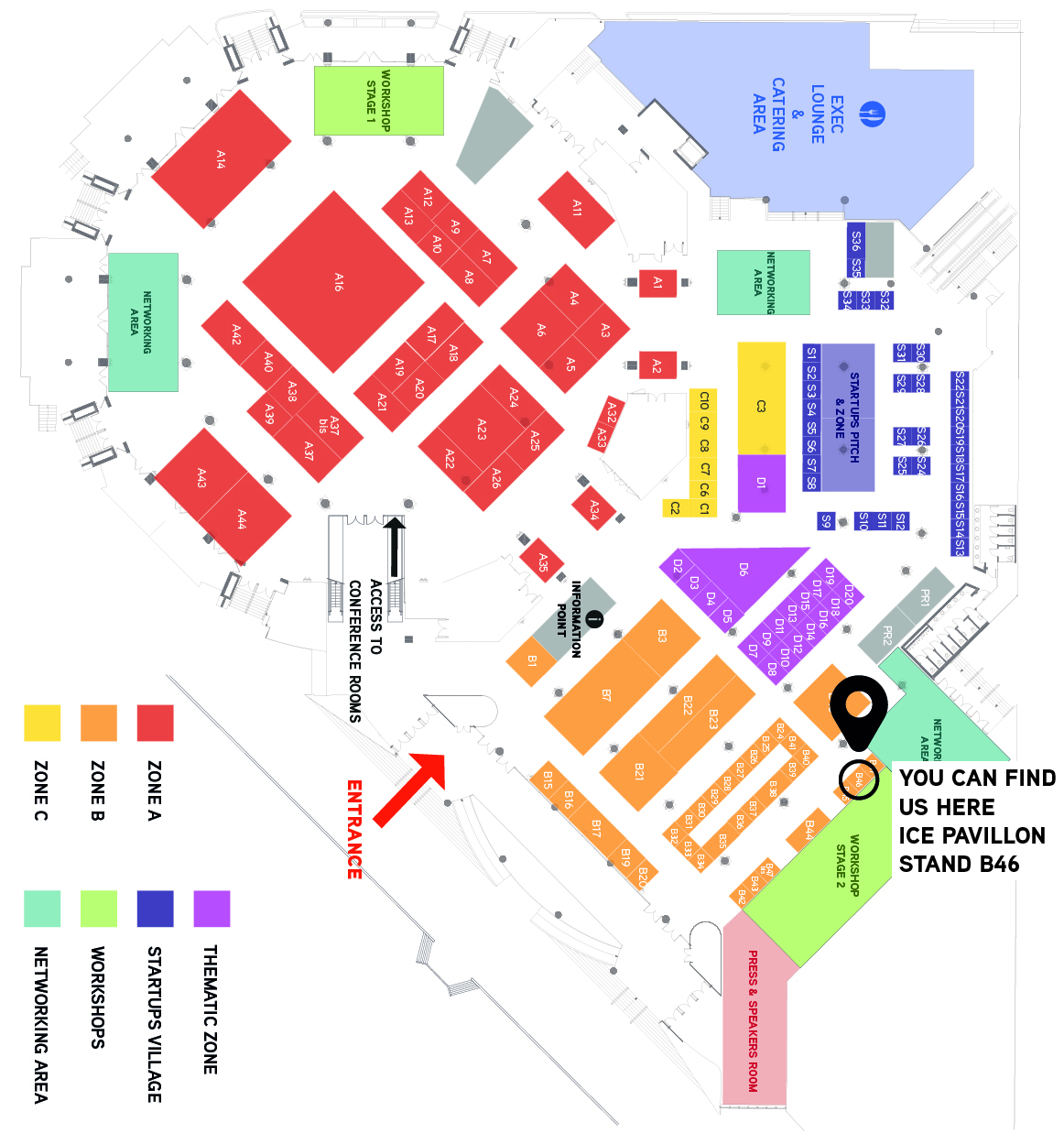The Edge Company will participate in the world artificial intelligence Cannes Festival from February 9 to 11. How could we miss such an important appointment?
The Edge Company will participate in the world artificial intelligence Cannes Festival from February 9 to 11.
Floorplan of the Fair:
We are looking forward to participating because:
– our focus is the use of artificial intelligence in aerospace,
– our goal is to detect obstacles and birds posing risk to flights for all types of flight,
– we want to show how AI technology can help humans improve safety and improve the work of flight operators.
Participating in such important fairs is also a way to show how the Edge Company has interpreted this technology and is making it a front-row player when it comes to improving the safety of both traditional and upcoming Urban Air Mobility flights. We intend to show that we have our finger on the pulse of the technology, that we understand what innovations other companies are bringing forward and their major areas of use, conscious of the fact that ours is the most advanced and reliable technology in this industry today.
What we have achieved is indeed important for traditional aviation because it helps reduce birdstrike, but it is of fundamental importance also for Urban Air Mobility, where flight safety is one of the fundamental pillars for the acceptance of the use of this mobility. In fact, safety is one of the 3 headline issues identified for acceptance of UAM by Easa.
Clearly we are talking about the safety of the people on board the eVtol and the safety of the people living and staying in the cities.
Here our BCMS Ventur system becomes an ENABLING technology for the new urban air mobility. It finds application in the ground infrastructure of Voloports to do obstacle detection, and in the city flight phases where it is used to detect uncooperative obstacles in flight corridors.
Our technology has no electromagnetic emissions, unlike radars, and is able to precisely identify the nature of the obstacle – and in the case of birds, even the species. In addition, it is continuously able to refine itself thanks to computer vision and neural network trainings already embedded in the technology.
According to the EASA roadmap, in 10 years’ time eVtols will be unmanned, and therefore there is increasing pressure to find safety systems that can recognize obstacles so that they can be avoided.
That is why, in addition to the BCMS Ventur system – is already installed and available on the market – we are also developing the VenturX system, which will be mounted on flying cabs, and will be used to recognize in-flight phases obstacles that are dangerous in size or trajectory and that can pose hazards to eVtols passengers.
Last but certainly not least, the BCMS Ventur can contribute to protecting wildlife and therefore help preserve the environment. As it is able to precisely monitor its surrounding environment and process large amounts of data, BCMS Ventur can also contribute to protecting and preserving wildlife. It does not pollute or emit electromagnetic waves, and it offers all the tools needed to perform excellent habitat management.
We will present our BCMS system live from the various parts of the world where it is installed and in the different uses: both in airports and flyovers and upcoming installations in urban corridors and other areas for bird protection and habitat management.
We will be in the Italian pavilion in the Italian Trade Agency organization’s booth and wil be looking forward to welcome you to see, with live links, our Ventur BCMS system in action around the globe.


